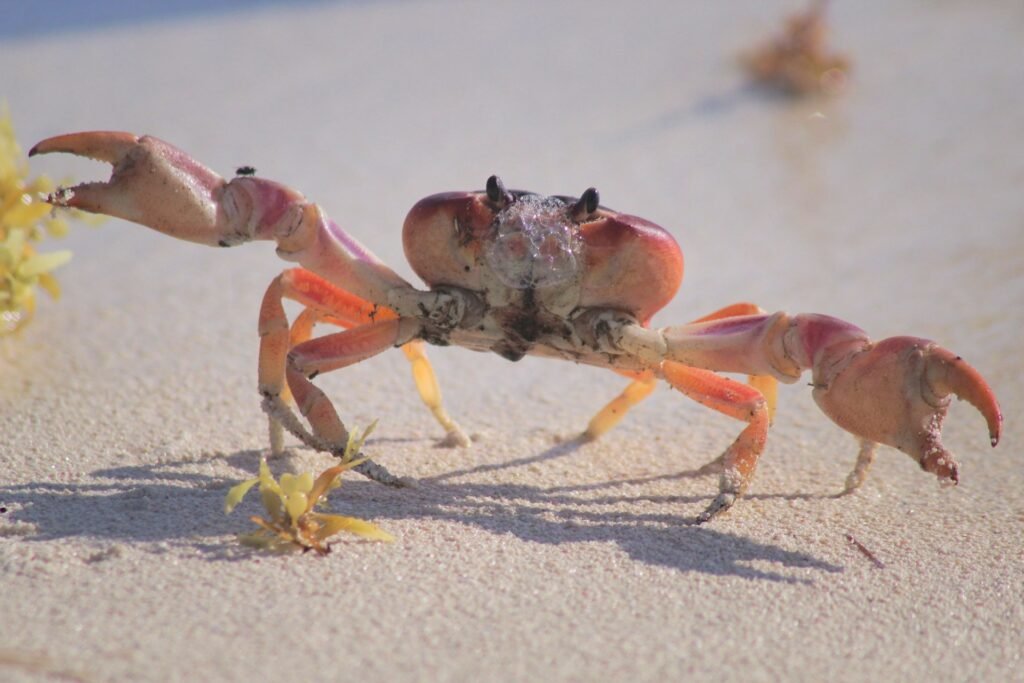Introduction
The term “cranky crustacean nyt” evokes an image of a marine creature with a distinct personality, often perceived as aggressive or irritable. These crustaceans, found in various parts of the world, have intrigued scientists and marine enthusiasts alike. Understanding the behavior and ecology of these creatures is crucial for marine biology and conservation efforts.
Relevance and Importance
Studying Cranky Crustaceans is essential for several reasons. They play a significant role in marine ecosystems, contributing to the health and balance of their habitats. Additionally, their unique behaviors offer insights into the adaptability and resilience of marine species, aiding in the development of conservation strategies.
Types and Categories
Different Species
Cranky Crustaceans encompass a variety of species, each with unique characteristics. Notable examples include:
- The Aggressive Crab (Cancer belligerens): Known for its territorial nature and frequent displays of aggression.
- The Irritable Lobster (Homarus irritabilis): Recognized by its defensive behavior and frequent conflicts with other lobsters.
- The Temperamental Shrimp (Penaeus temperatus): Exhibits rapid changes in behavior, often becoming aggressive when threatened.
Unique Features
Each species of Cranky Crustacean has distinct physical and behavioral traits that set them apart. These features include differences in size, coloration, habitat preferences, and social behavior. Understanding these distinctions helps in identifying and studying these crustaceans in their natural environments.
Symptoms and Signs
Common Behaviors
Cranky Crustaceans exhibit a range of behaviors that signal their crankiness. Common signs include:
- Aggressive Posturing: Raising claws or antennae as a threat display.
- Frequent Fighting: Engaging in physical confrontations with other crustaceans.
- Rapid Movement: Sudden bursts of activity, often in response to perceived threats.
Indications of Stress
Signs of stress in Cranky Crustaceans can include:
- Color Changes: Alteration in coloration, often becoming darker.
- Hiding: Increased time spent in hiding places.
- Decreased Feeding: Reduction in food intake.
Causes and Risk Factors
Environmental Factors
Several environmental factors can influence the behavior of Cranky Crustaceans, such as:
- Water Quality: Poor water conditions can lead to stress and aggressive behavior.
- Habitat Disruption: Changes in their habitat, such as pollution or construction, can trigger crankiness.
Biological Factors
Biological factors contributing to crankiness include:
- Genetics: Inherent predisposition to aggressive behavior.
- Health: Illness or injury can increase irritability and aggression.
Diagnosis and Tests
Common Methods
Researchers use various methods to study Cranky Crustaceans, including:
- Behavioral Observation: Monitoring and recording behavior in natural and controlled environments.
- Physical Examination: Assessing physical health and condition.
Advanced Diagnostic Tools
Advanced tools in crustacean research include:
- Genetic Analysis: Identifying genetic markers associated with aggressive behavior.
- Biochemical Tests: Measuring stress-related hormones and compounds.
Treatment Options
Managing Behavior
Approaches to managing Cranky Crustacean behavior involve:
- Environmental Enrichment: Providing a stimulating environment to reduce stress.
- Dietary Adjustments: Ensuring a balanced diet to support health and reduce irritability.
Therapies and Interventions
Therapies and interventions can include:
- Habitat Modification: Creating optimal living conditions to minimize stress.
- Behavioral Therapy: Techniques to reduce aggression, such as gradual exposure to stressors.
Preventive Measures
Maintaining a Healthy Environment
Preventive strategies to maintain a healthy environment for Cranky Crustaceans include:
- Regular Water Testing: Ensuring optimal water quality.
- Habitat Complexity: Providing hiding places and varied substrates.
Tips to Prevent Stress
Additional tips to prevent stress and aggression:
- Consistent Routine: Maintaining a consistent care routine.
- Minimizing Disturbance: Reducing handling and sudden changes in the environment.
Personal Stories or Case Studies
Real-Life Interactions
Stories from marine biologists and enthusiasts provide valuable insights into the behavior of Cranky Crustaceans. These narratives highlight the challenges and rewards of studying these enigmatic creatures.
Behavioral Changes
Case studies documenting changes in behavior due to environmental or experimental interventions offer practical knowledge for managing Cranky Crustaceans.
Expert Insights
Marine Biologists’ Quotes
Experts in marine biology provide valuable perspectives on the behavior and management of Cranky Crustaceans. Their insights guide best practices in research and conservation.
Professional Advice
Advice from professionals includes recommendations for maintaining healthy crustacean populations and minimizing stress-induced aggression.
Conclusion
This article has explored the fascinating world of cranky crustacean nyt, highlighting their unique behaviors, environmental influences, and the importance of research and conservation efforts.

